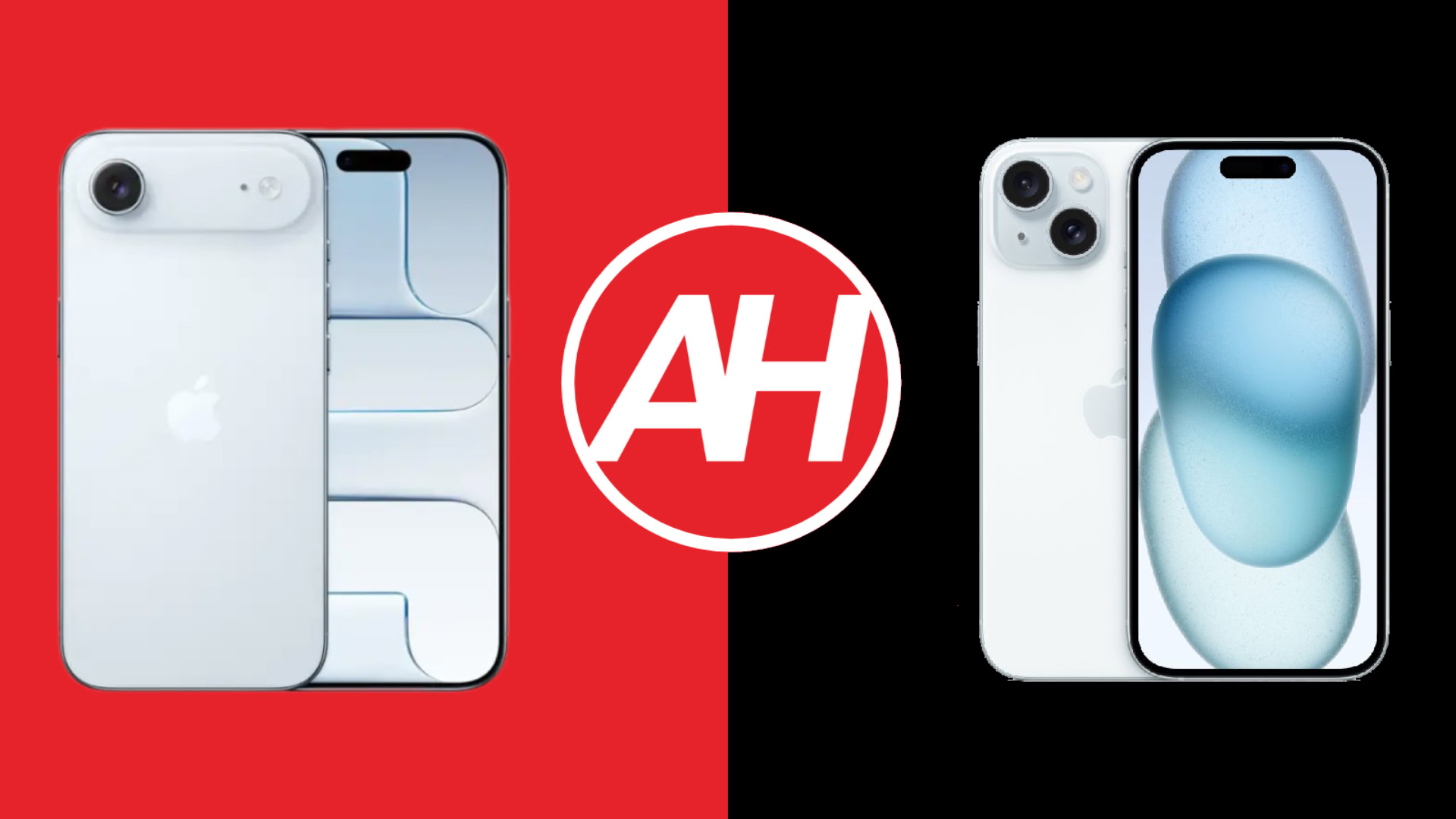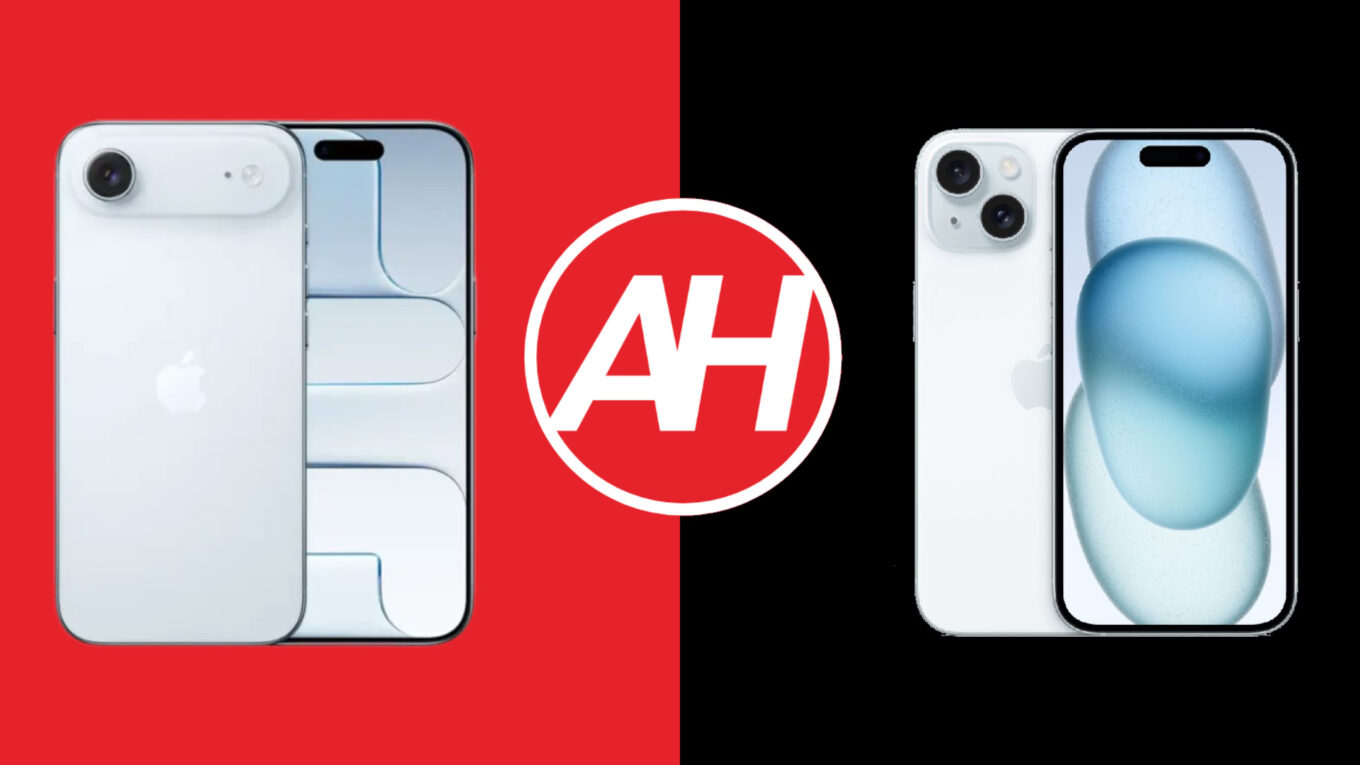This time around, we’re comparing two smartphones from Apple. To be more precise, we’re comparing the Apple iPhone Air vs Apple iPhone 15. The iPhone Air is a member of the iPhone 17 series, Apple’s newest smartphone series. The iPhone 15, on the other hand, is two years old at this point. Some of you are probably looking to upgrade from the iPhone 15, and the iPhone Air could be just the right phone for you.
First, we’ll list the specifications of both smartphones. Following that, we’ll compare them across a number of other categories. We’ll compare their designs, displays, performance, battery life, cameras, and audio output. There are actually quite a few differences here, despite the fact these two phones are technically cousins. So, let’s get to it, shall we?
Specs
Apple iPhone Air
$999 from Apple
Apple iPhone 15
$539 (renewed) from
Apple iPhone Air
Apple iPhone 15
Dimensions
156.2 x 74.7 x 5.6 mm
147.6 x 71.6 x 7.8 mm
Weight
165 grams
171 grams
Display
6.5-inch LTPO Super Retina XDR OLED
6.1-inch Super Retina XDR OLED (60Hz)
Refresh rate
1-120Hz
60Hz
Resolution
2736 x 1260
2556 x 1179
Chipset
Apple A19 Pro
Apple A16 Bionic
RAM
12GB
6GB
Storage
256GB/512GB/1TB
128GB/256GB/512GB
Main camera
48MP (f/1.6 aperture, 1/1.56-inch sensor size, sensor-shift-OIS)
48MP (f/1.6 aperture, 1/1.56-inch sensor size, 1.0um pixel size, sensor-shift OIS, PDAF)
Ultra-wide camera
N/A
12MP (f/2.4 aperture, 120-degree FoV, 0.7um pixel size)
Telephoto camera
N/A
N/A
Periscope telephoto camera
N/A
N/A
Selfie camera
18MP (f/1.9 aperture, OIS)
12MP (f/1.9 aperture, 1/3.6-inch sensor size, 1.0um pixel size, PDAF)
Battery size
3,149mAh
3,349mAh
Charging
Wired, 20W MagSafe wireless, 4.5W reverse wired (charger not included)
20W wired, 15W MagSafe & Qi2 wireless, 4.5W reverse wired (charger not included)
Colors
Space Black, Cloud White, Light Gold, Sky Blue
Black, Blue, Green, Yellow, Pink
View Specifications
Apple iPhone Air vs Apple iPhone 15: Design
The two phones look very similar if you look at them from the front, but from every other angle, there are notable differences. The Apple iPhone Air has a frame made out of titanium, while the Apple iPhone 15’s is made out of aluminum. The frame on the iPhone Air also curves more towards the edges, even though it’s technically flat, like the one on the iPhone 17. The frame on the iPhone Air is also notably thinner. There’s glass on the back of both phones.
From the front, the two phones look very similar. The iPhone Air does have thinner bezels, though. Both smartphones include flat displays with a centered pill-shaped camera hole up top. That camera hole is also known as the Dynamic Island. The bezels are uniform on both smartphones, which is always good to see. The power/lock button sits on the right-hand side of both phones, though the iPhone Air also has the Camera control key on the right. On the left, both smartphones include volume keys and the Action key.
If we flip them around, you’ll notice that the iPhone Air not only has a single camera on the back, but that camera sits on a thin camera bar. The iPhone 15, on the other hand, has two vertically aligned cameras in the top-left corner. Those two cameras are placed on top of a camera island. Both smartphones are IP68 certified for water and dust resistance, while the iPhone Air has a larger display. It is taller, wider, and thinner than the iPhone 15. The iPhone Air is also slightly lighter at 165 grams, compared to 171 grams. Both of them are quite slippery.
Apple iPhone Air vs Apple iPhone 15: Display
The Apple iPhone Air includes a 6.5-inch LTPO Super Retina XDR OLED display. This panel is flat, and it has an adaptive refresh rate (1-120Hz). Dolby Vision is supported, as is HDR10 content. The peak brightness on this panel is 3,000 nits. The screen-to-body ratio is at around 90%, while the display aspect ratio is 19.5:9. The resolution here is 2736 x 1260 pixels, while the Ceramic Shield 2 protects this panel. This display also comes with an anti-reflective coating.
Apple iPhone 15
The iPhone 15, on the other hand, has a 6.1-inch Super Retina XDR OLED display. This panel is also flat, and it also supports HDR10 and Dolby Vision. The peak brightness this display can offer is 2,000 nits. The screen-to-body ratio here is around 86%, while the display aspect ratio is 19.5:9. The resolution on offer is 2556 x 1179 pixels, while the Ceramic Shield glass is here to protect the panel.
The iPhone Air has the better display out of the two, in a number of ways. Its display comes with a 120Hz refresh rate, while the iPhone 15 is stuck at 60Hz. The iPhone Air’s panel also gets brighter in direct sunlight, which is something you’ll appreciate, not to mention that it has the anti-reflective coating that does make a difference. The iPhone 15’s display is good, but it cannot measure up to what the iPhone Air offers.
Apple iPhone Air vs Apple iPhone 15: Performance
The iPhone Air comes with Apple’s latest Apple A19 Pro processor. That is a 3nm chip, though it comes with one less GPU core than the regular A19 Pro model in the ‘Pro’ iPhones. It has 5 GPU cores. That chip is partnered up with 12GB of RAM and NVMe flash storage. The storage is not expandable.
The Apple iPhone 15, on the other hand, is fueled by the Apple A16 Bionic chip. That is a 4nm processor, and it’s still quite powerful and capable. That chip is paired with 6GB of RAM inside the iPhone 15, while this phone also uses NVMe flash storage. The iPhone 15 does not offer storage expansion either.
You’ll be glad to know that both of these phones offer excellent performance. They will run perfectly fine and smooth on a day-to-day basis. Yes, the iPhone Air is the better choice if you require it to do some graphically-intensive tasks, such as gaming, even though it’s not the best choice for gaming out of the new iPhones, not even close. The iPhone 15 is still very good in terms of running games as well. In any case, the performance should not be an issue regardless of which phone you end up choosing.
Apple iPhone Air vs Apple iPhone 15: Battery
The Apple iPhone Air includes a 3,149mAh battery on the inside. The iPhone 15, on the flip side, has a 3,349mAh battery. Do note that the iPhone Air does have a larger display out of the two, not to mention that it’s also an LTPO one with a higher refresh rate. Yes, the iPhone 15 does offer better battery life, as you’d expect. The iPhone Air is not far behind, however, which some of you may find surprising.
Apple actually did a fine job with battery optimization on the iPhone Air. That Apple A19 Pro chip is really good in terms of power consumpion. Most people will be able to get through their day with both smartphones, without the need for a charging cable. Power users may have issues in that department. Getting over 6 hours of screen-on time shouldn’t be a problem for either phone, presuming you’re not running plenty of graphically-intensive tasks on both. Your mileage may vary, however, of course.
When it comes to charging, the iPhone Air supports 20W wired charging, even though it’s more like 18W, realistically. It also supports 20W MagSafe wireless charging, and 4.5W reverse wired charging. The iPhone 15 supports 20W wired, along with 15W MagSafe wireless charging, and 4.5W reverse wired charging. Neither phone ships with a charging cable in the retail box.
Apple iPhone Air vs Apple iPhone 15: Cameras
When it comes to camerasw, things are quite interesting. The iPhone Air has only one camera on the back. It includes a 48-megapixel main camera (1/1.56-inch sensor size). That’s it. The iPhone 15, on the other hand, has that very same camera on its back. Not only is the sensor the same, but the lense too. Both phones includes an f/1.6 lens aperture. The iPhone 15 also has a 12-megapixel ultrawide unit (120-degree FoV) on the back.
So, yes, the iPhone 15 is a more versatile camera smartphone. If you use an ultrawide camera a lot, that is the better choice. If you’re planning on using your phone to shoot in low light, sticking to the main camera may be a better choice. Both smartphones do a good job in the camera department, even though there are some slight differences when shooting with the main camera, despite the fact that it’s the same sensor.
Both phones provide images that are well-balanced and rather close to real life. The iPhone Air seems to be a bit better in that regard, but the images are very similar. The ultrawide camera on the iPhone 15 can be useful, but the main unit is obviously the better camera of the two. The selfie camera on the iPhone Air has a considerable advantage. Apple used a square sensor this time, so it’s far more versatile, and it’s better in general.
Audio
When it comes to audio, the audio output is much better on the iPhone 15. Why? Well, the iPhone 15 comes with stereo speakers, rather good stereo speakers. The iPhone Air is limited to a single speaker. The audio output is not only louder on the iPhone 15, but it’s fuller too.
Neither smartphone includes an audio jack, so if you’d like to connect your wired headphones to either phone, you’ll have to use its Type-C port. Alternatively, the iPhone Air supports Bluetooth 6.0, while the iPhone 15 comes with Bluetooth 5.3 support.
The post Phone Comparisons: Apple iPhone Air vs Apple iPhone 15 appeared first on Android Headlines.

Source: ndroidheadlines.com
